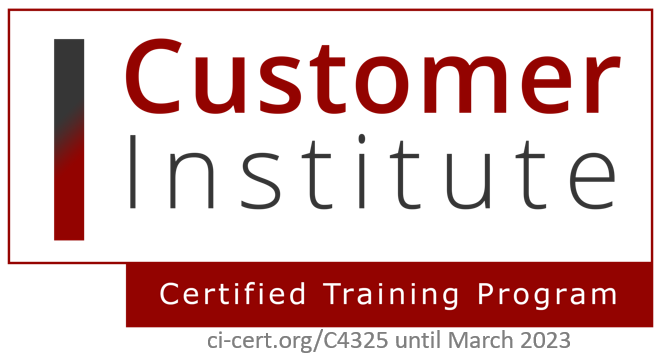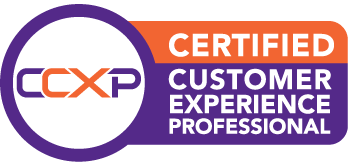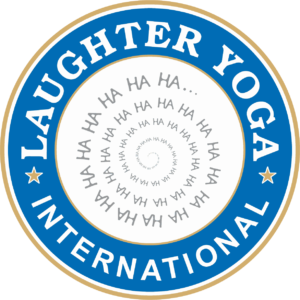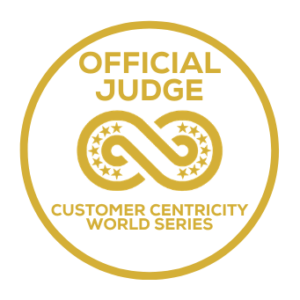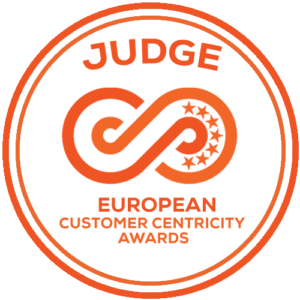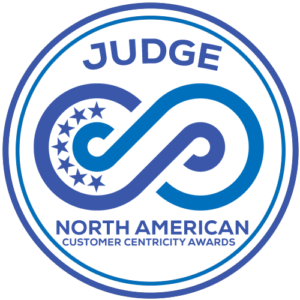In this post, we share an exceptional customer service leadership example witnessed a few weeks ago while we were in Tirana (Albania) to deliver the first Contact Center training jointly designed and delivered by Wow Now (Rosaria Cirillo) and EarlyBridge (Kathy van De Laar).
All CX Professionals know that Customer Service is a critical element of company success and it takes significant effort and resources to build and maintain exceptional service.
Truly customer centric companies want their customers or clients to say WOW about their service. I surely want my clients to say WOW about my services and to have their end customers say WOW too.
This is the story of how my client made me say WOW, in fact, more than one, FOUR WOWs.
The backstage story
It all started over a year ago, as I was supporting one of my clients to the design, develop and implement their NPS program and to drive improvement opportunities based on new insights gained through NPS. As part of this effort, a parallel Customer Service Benchmark Project was started, including three countries, one of which was Italy, my native country.
Part of their contact center had been outsourced two years before to an external partner in Tirana. One of the main worries of my client management team was that language skills may not be good enough, that the end customers (highly educated professionals and their staff, calling with questions ranging from payment issues to order status to subscription management) would not find the agent language good enough.
As for any project, I started with “getting grounded ” in:
- volumes (in this case based on contact reasons),
- NPS feedback (available for 2 of the three benchmark countries, but not for Italy),
- my “Act as Customer” practice (making a purchase and go through the entire process myself) and
- my direct “Listening tocalls” practice (the one input every single company has available and yet is still so underestimated and underutilised).
During my evaluation of the call handling skills, I noted an excellent level of quality for the language proficiency, process knowledge, professionalism and courtesy. I was struck by the fact that I could hardly tell whether the agents were native or not. I noticed, however, that they sounded like a recorded machine, so the next improvement opportunity was certainly to develop empathy and connection skills with customers.
By better recognizing and acknowledging customer emotions in the call, the call center agents would be able to handle the calls more effectively, improve their resolution capabilities and leave customers with a more positive impression.
The management team took my feedback very openly, and pro-actively started considering and evaluating training opportunities internally and externally (through me and other options), adding it into budget and planning (something which is not exactly straightforward when you need to get 35 customer service agents off-line for a day of training)
The 4 WOWs my client made me say
During this project experience I found myself saying WOW at least four times, as I witnessed the following examples of Customer Service Leadership:
1. Act on (valid) customer feedback & insight
I give improvement feedback regularly, but for all possible (valid or not) reasons companies don’t always act upon. My first WOW was when after few months of waiting for right timing & budget availability, the Head of Customer Operations and his CC Director came back to me in July and said “we are ready to do this now, can we do it in September already?”, losing no time between decision and action.
2. Get the outsourced partner & contact center right
My second WOW (or a series of WOW) was once arrived in Tirana and visiting the contact center. The city was surprisingly alive and well taken care of. We were greeted on Sunday evening with a dinner together by the outsourcing vendor owner and manager.
On Monday morning we found the contact center to be in a bright and colourful office floor with plenty of space per agent. The agents themselves were also a pleasant surprise: they were all highly educated, but most of all had a very participative and interactive attitude and were keen to get trained on new skills.
The team also had a dedicated language teacher who regularly reviewed and coached the language the agents used, something I haven’t seen yet happening at big multilingual contact centre which also employee non-native speakers (and at times even native speakers would benefit from using the most proper grammar and terminology selections).
3. Get management involved
Both the vendor owner and the location manager joined in the training, while from the client side the Head of Customer Operations and four members of his customer service management team all flew in from their offices in Milan and Rome to be part of the training too. This allowed them to acquire additional communication skills and tools, but also to see the agents’ reactions, to fully understand impact on new way of handling calls and to coordinate with the local team the changes started by this training.
Like it’s bound to happen when delivering training that implies some changes in the status quo, the agents had the natural push-back. When the agents started to say “Oh we can’t do that, that will make the call take much longer” or “we can’t do that, that’s not what our procedure says”, the most effective resolution was when the management team stepped in and said: “We are committed to providing better, remarkable customer experiences. We fully support changes coming with this training. If call handling minutes go up at the beginning that’s fine; if our procedures don’t support or enable enough this customer focus, let’s look at which of them doesn’t and see how we can change them”
4. Get personally involved & walk the talk
The moment though that totally “blew me away” in WOW and awe was on the second morning. We had divided the 35 agents into two groups and the training in two blocks to be delivered each in half day class over two days:
- Communication skills basics supported through the “funnel technique”: listening, summarizing and asking the right questions
- Empathy skills supported by the “Use of 3 Rs technique”: Recognize emotion, Reflect and Respond.
“I want to take a moment to step in here because I see how you all look quite terrified right now. I would be too. Taking the phone 30-40 times a day to handle client questions is already hard enough, I surely couldn’t do it. Now we are giving you a lot of new tools and elements: the funnel technique and the 3 Rs, all on top of the procedures you need to follow. It’s totally normal if you feel scared or overwhelmed right now. I would do to. We are not expecting overnight changes. This is a process, and it will take time. We are giving you now all these new tools and techniques, because you are now so well prepared on the process and procedures and you have done such a good job to date that we trust you are ready to take the next step. We succeed if you succeed. We are good if you are good. You are our face towards the end customers. It’s a journey, and it will take time and adaptation. And we are here to support you in the journey. Please let us know what support you need from us. Ok?”.
A look at the agents and you could see that they immediately went from a status of tension and apprehension to one of relief and engagement.
Without this being prepared up front and, actually, without the Head of Operations even realising it, he gave the agents a practical demonstration of how everything they had learned in the past two days could be applied in just little over a minute:
- listening (or observing – in this case),
- recognizing the emotion,
- reflecting on the emotion,
- summarizing and respond to the emotion,
- asking final confirmation and getting a commitment.
Conclusions
All of these contributed to the overall success of the training, and of the engagement and enthusiasm, we saw from the agents. They are a key example of leadership best practices!
What about you? Do you recognize these elements? How often do you observe them, especially in Customer Service environments, which are often seen as far from the company, even when they are the first face to the customers?
Do you have Customer Service training requirements and would like to learn more about how Wow Now and EarlyBridge can help you too? Get in touch so we can discuss your specific needs

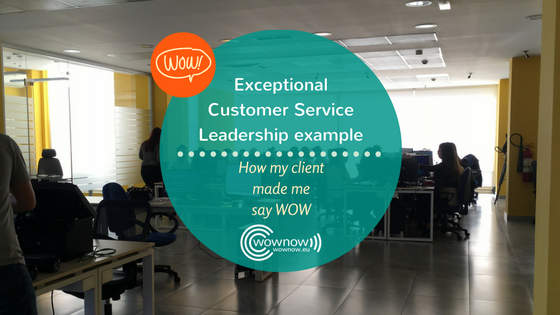


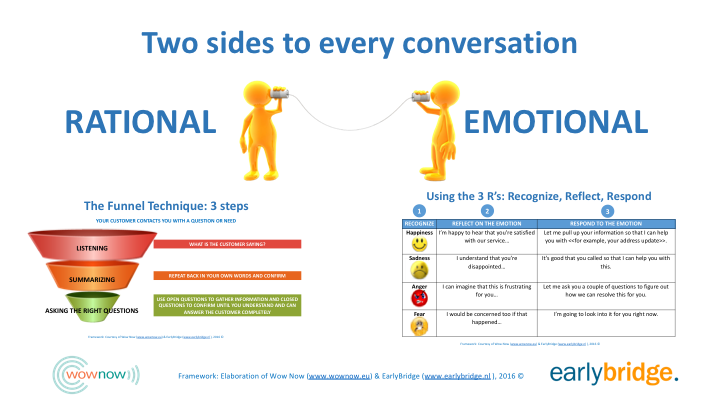

 A (little Italian) sunshine of energy, enthusiasm, and passion, with a mission to bring more happiness in the world one interaction at the time, the business world being my chosen playground!
I inspire and empower conscious leaders to nurture their happiness (moving from depleting to enriching emotions) and to move from depleting to enriching experiences, choosing, designing, and delivering WOW life-enriching interactions that contribute to everyone’s HAPPINESS, so they can achieve business and personal prosperity, making happiness their competitive advantage
A (little Italian) sunshine of energy, enthusiasm, and passion, with a mission to bring more happiness in the world one interaction at the time, the business world being my chosen playground!
I inspire and empower conscious leaders to nurture their happiness (moving from depleting to enriching emotions) and to move from depleting to enriching experiences, choosing, designing, and delivering WOW life-enriching interactions that contribute to everyone’s HAPPINESS, so they can achieve business and personal prosperity, making happiness their competitive advantage 